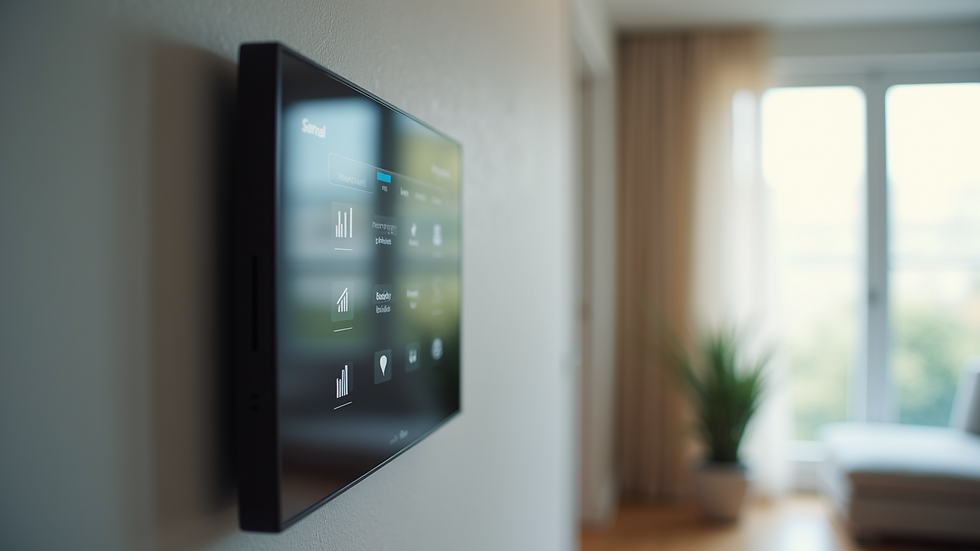Supporting Senior Independence Through Smart Care Solutions
- smita mahale

- Aug 30
- 4 min read
As the population ages, maintaining autonomy and quality of life for older adults becomes increasingly important. Smart care solutions offer innovative ways to support seniors in living independently while ensuring their safety and well-being. These technologies and services empower seniors to manage daily tasks, stay connected with loved ones, and receive timely assistance when needed. This article explores various senior independence solutions that enhance the lives of older adults and provide peace of mind for families and caregivers.
Understanding Senior Independence Solutions
Senior independence solutions encompass a wide range of technologies and services designed to help older adults live safely and comfortably in their own homes. These solutions address common challenges such as mobility limitations, medication management, social isolation, and emergency response.
Some popular senior independence solutions include:
Smart home devices: Automated lighting, thermostats, and security systems that can be controlled remotely or programmed for convenience.
Wearable health monitors: Devices that track vital signs, detect falls, and send alerts to caregivers or emergency services.
Medication management tools: Electronic pill dispensers and reminder apps that help seniors take medications correctly and on time.
Communication platforms: Easy-to-use video calling and messaging apps that keep seniors connected with family and friends.
Transportation services: Ride-sharing and shuttle services tailored to seniors’ mobility needs.
By integrating these solutions, seniors can maintain their independence while reducing risks associated with aging.

Smart home control panel enabling easy management of home environment
Benefits of Smart Care Solutions for Seniors
Smart care solutions offer numerous benefits that contribute to the overall well-being of older adults. These benefits include:
Enhanced Safety
Fall detection sensors and emergency alert systems provide immediate assistance in case of accidents. Smart locks and security cameras help protect seniors from intruders.
Improved Health Monitoring
Wearable devices continuously monitor heart rate, blood pressure, and activity levels, allowing early detection of health issues and better chronic disease management.
Greater Convenience
Automated home systems reduce the need for physical effort in daily tasks such as adjusting lighting or temperature, making life easier for seniors with mobility challenges.
Increased Social Engagement
Communication tools help seniors stay connected with loved ones, reducing feelings of loneliness and isolation.
Support for Caregivers
Remote monitoring and alerts enable caregivers to provide timely support without being physically present, reducing stress and improving care quality.
Implementing these solutions can significantly improve seniors’ quality of life and help them maintain their independence longer.

Wearable health monitor providing real-time health data for seniors
Who qualifies for the $3000 senior assistance program in California?
The $3000 senior assistance program in California is designed to help eligible seniors access smart care solutions and other supportive services. To qualify for this program, applicants typically must meet the following criteria:
Be a resident of California aged 60 or older.
Have a limited income that falls below a specified threshold.
Demonstrate a need for assistance with daily living activities or health management.
Be willing to participate in an assessment to determine eligibility and appropriate services.
This program aims to reduce barriers to adopting senior independence solutions by providing financial support. Seniors who qualify can use the funds to purchase devices such as emergency alert systems, medication dispensers, or home safety modifications.
Local agencies and community organizations often assist seniors in applying for this program and selecting suitable solutions tailored to their needs.

Senior receiving support to apply for the $3000 assistance program in California
Practical Tips for Choosing the Right Senior Independence Solutions
Selecting the most appropriate smart care solutions requires careful consideration of the senior’s unique needs, preferences, and living environment. Here are some practical tips to guide the decision-making process:
Assess Needs Thoroughly
Identify specific challenges the senior faces, such as mobility issues, memory problems, or social isolation. This helps narrow down the types of solutions that will be most beneficial.
Prioritize Ease of Use
Choose devices and apps with simple interfaces and clear instructions. Seniors are more likely to use technology consistently if it is user-friendly.
Consider Compatibility
Ensure new devices can integrate with existing home systems or other technologies the senior already uses.
Check for Support and Training
Opt for solutions that come with customer support, tutorials, or in-person training to help seniors and caregivers get started.
Evaluate Costs and Funding Options
Look into financial assistance programs, insurance coverage, or discounts that can make solutions more affordable.
Test Before Committing
Whenever possible, try out devices on a trial basis to confirm they meet the senior’s needs and comfort level.
By following these tips, families and caregivers can make informed choices that enhance safety, convenience, and independence.
Future Trends in Senior Independence Solutions
The field of senior care technology is rapidly evolving, with new innovations emerging to better support aging populations. Some promising future trends include:
Artificial Intelligence (AI) and Machine Learning
AI-powered systems can analyze health data to predict potential issues and recommend preventive measures.
Voice-Activated Assistants
Devices like smart speakers enable seniors to control home functions, access information, and communicate hands-free.
Robotics
Companion robots and robotic assistants can provide physical help, reminders, and social interaction.
Telehealth Integration
Remote medical consultations and monitoring will become more seamless, allowing seniors to receive healthcare without leaving home.
Personalized Care Plans
Data-driven insights will enable customized care solutions tailored to individual health profiles and lifestyles.
These advancements will continue to expand the possibilities for supporting senior independence and improving quality of life.
Embracing Independence for Seniors with Smart Care Solutions
Supporting older adults in maintaining their autonomy is essential for their dignity and happiness. Smart care solutions offer practical, effective ways to address the challenges of aging while promoting safety and well-being. By leveraging technology and community resources, seniors can enjoy greater freedom and confidence in their daily lives.
For those interested in exploring options to enhance independence for seniors, it is important to research available tools, seek professional advice, and consider individual preferences. With the right support, seniors can thrive in their own homes and communities for years to come.



Comments